One of the things I love about security is how security researchers are so passionate about their jobs; they for the most part respect their peers and enjoy learning about attacks so they are willing to share information.
As a result of this dynamic over the past few days I have had a chance to look at a number of details about the #Flame malware as well as the rogue certificates it used as part of the its Windows Update attack.
With that said the raw data having already been published here quite a long time ago I think it’s OK to go into details on this now (Another interesting data point is that this link is discussing how to bypass the Terminal Services license mechanism).
This certificate chain gives us some insights into the age of the solution Microsoft was using to license Terminal Server Clients, for example one certificate chain I received shows us the following:
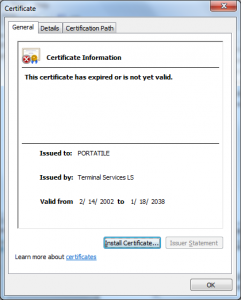 |
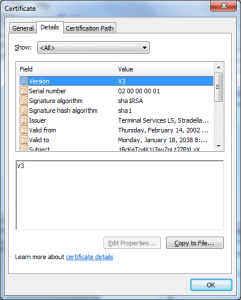 |
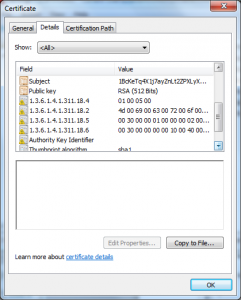 |
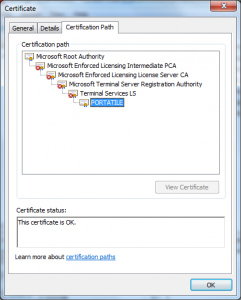 |
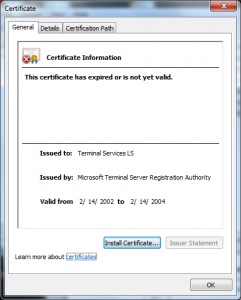 |
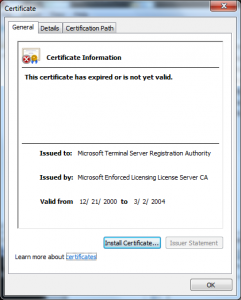 |
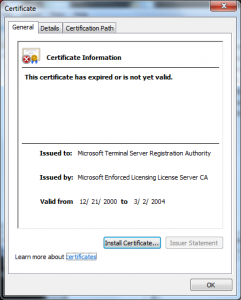 |
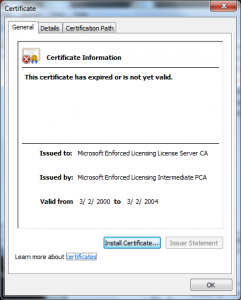 |
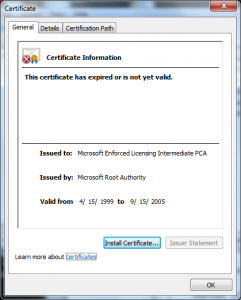 |
From this we can tell a few things, including:
- The licensing solution has been in use since at least 1999 – Its issuance date is Thursday, April 15, 1999 12:00:00 AM, we can assume this is the case if we assume the “Microsoft Enforced Licensing Intermediate PCA” is in a Microsoft vault (very safe to assume).
- The “Licensing Server” was built to include unverified information in each license originally – We can assume this since the other certificates we saw included no organization details in the subject name while this one has a DN of “CN = Terminal Services LS, L = Stradella, S = PVC = IT, E = ater**@libero.it”
- The PKI was rebuilt in around 2004 – In the first certificates we saw the Microsoft operated CA that issued the “licensing server” (Microsoft Enforced Licensing Registration Authority CA) expired in 2009, in the most recent certificate the chain is a one leaf shorter but same logical entity expires in 2004.
- The format of the certificates changed around 2004 – In the first certificates we saw only a single proprietary extension, in this one we see four. This suggests that there was a code change in how licenses were validated around this time. This also approximately aligns with when one might expect the Windows Server development to begin for the next version (at the time development cycles were 3-4 years).
- Attackers were using this in combination with other attacks even then – In 2003 there was a security defect in the way Windows handled Basic Constraints (see MS 02-050). This allowed certificates that were not CAs to be trusted to issue CA certificates.
In this most recent certificate chain we can see that a Terminal Services LS (a license) has issued another certificate, the validity of this certificate was based on a combination of two factors:
- The root CA being trusted by the entity validating the certificate.
- The license certificate being able to issue other certificates.
This combination allowed the attacker to simply have access to a CAL, not even the License Server and produce a certificate that could be used to attack another system – I will do a post about this later.
- Terminal Services doesn’t do full certificate validation on its licenses – The post I got this certificate from states it works on machines as recent as 2008 but the “Terminal Services LS” expires in in 2004, the certificate that was minted bellow it (the evil “PORTATILE” one) is good until 2038. This would not pass the CryptoAPI certificate validation logic on those platforms due to the BasicConstraints restrictions on the certificate and the date issues alone.
So in summary, this issue has been around a very long time, much longer than Flame or Stuxnet. There are a few very interesting conclusions I come to as I write this:
- Even without the Basic Constraints issue no collision attack would have been needed to make use of this original Licensing PKI .
- Despite the changes in the client behavior in Windows Vista in how Critical Extensions are handled, the weak cryptography made it practical to continue to use this PKI maliciously.
- Those who knew about this tried to keep it a secret as long as possible as it was very valuable.
- Despite developing a world-class security program over the last decade this issue managed to fly under the radar until now.